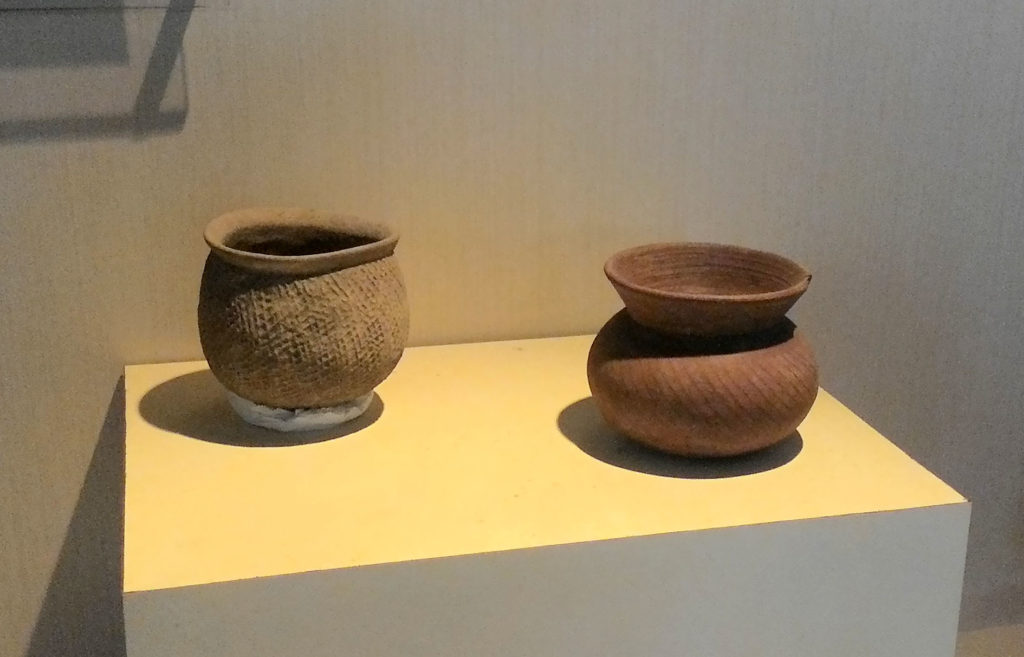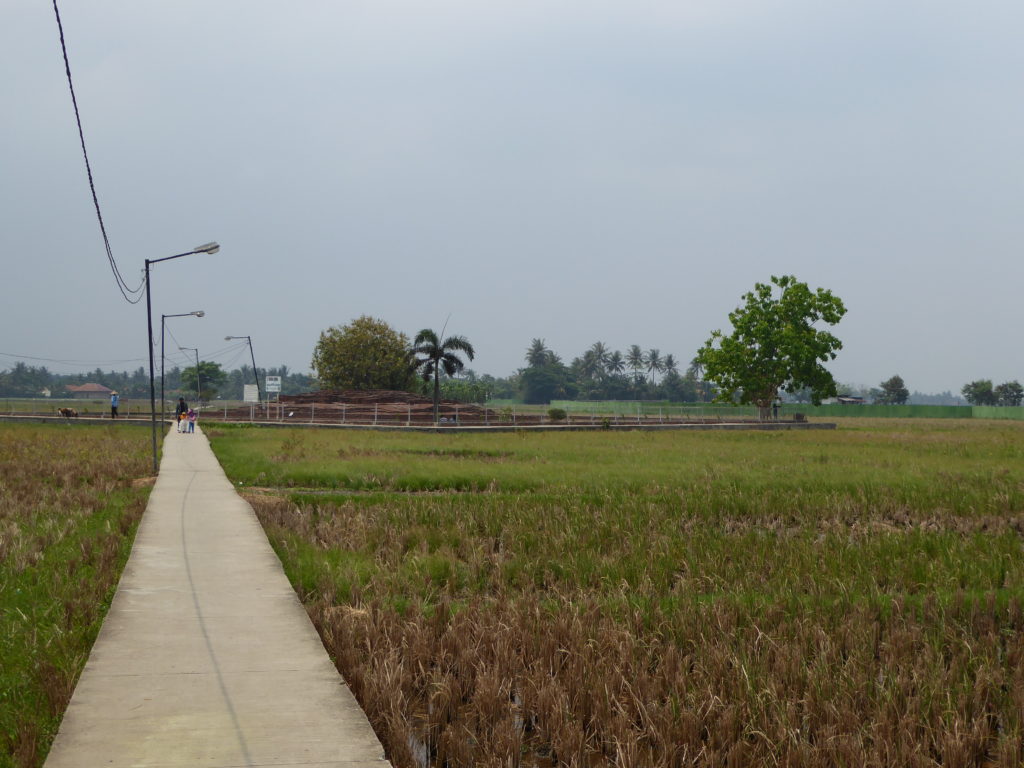So, let’s just start with the place that got me into this thing in the first place. What was happening on the island where my grandparents were born when the Romans were building their riverine frontier in The Netherlands? Very little of the pre-colonial history of Indonesia is part of the western historical canon. Some people will know that before Islam became the dominant religion on Java – which happened only in the 15th century – the island was under Hindu-Buddhist influence. A few, perhaps, will know that there once was an empire that ruled over larger parts of the Indonesian archipelago from its base in Trowulan, East Java (incidentally, that is within walking distance of the place where in 1920 my grandmother would be born). This so-called Majapahit Empire had its golden age in the 14th century and it was the last in a series of Hindu-Buddhist kingdoms that had ruled over parts of Java from the fourth century CE onwards.
Java before Indianization
In the first century CE, all of this was in the far future. ‘Indianization’ (as it is called by some) had not yet truly begun, and there is no evidence that the Indian religions had established a meaningful presence in Indonesia. In fact, no historical sources from the period exist: the oldest texts on Java date to the reign of an early fifth century (CE) king of the kingdom of Tarumanagara, who was called Purnawarman. They are written in Sanskrit using the so-called Pallava-script – indeed, both the language and the script came from India.

To understand what is happening on Java before this period, one therefore has to rely on material culture. For a long time, this quite simply meant that, basically, nothing was known about what was happening, and still, the number of seriously investigated archaeological sites with evidence from the last centuries BCE or the first centuries CE on Java remains limited.
This is not to say that nothing is there. A couple of archaeological sites in North-West Java, have yielded remains from datable contexts that give some clues about some of the developments of the period. The evidence remains in many ways elusive: no built structures are known, and most finds are artefacts coming from funerary context.
Buni and Batujaya
The local pottery tradition of the time has become known as the ‘Buni culture’, after one of the principal findspots. It is characterized by very simple, incised geometric decoration in a style that somewhat resembles contemporary pottery traditions elsewhere in South-East Asia. Even if all of this pottery was locally made, this suggests that the north coast of Java had already been integrated in larger regional networks of maritime (cultural) exchange.

One of the best published sites with evidence from the period is Batujaya, not far from Buni. This site, discovered only late in the 20th century, is best known for its ‘medieval’ (fifth to ninth century CE) Buddhist temple complex, of which ample remains are visible on-site, but a substantial number of burials from the first two centuries CE have been found in lower levels (Manguin & Indradjaja 2011).
The grave goods from these burials give a good indication of the material culture of North-West Java, which was a mixture of locally produced objects and, increasingly, imports. As in multiple other sites from the period, grave goods included so-called ‘rouletted’ ware and stamped ware from India, but also a gold object that the excavators have associated with ‘Persia’ (or, in this period, rather, the Parthian empire).
Textiles from the Far West?
Still, there may be a bit more. In a 2015 article, the excavators of Batujaya presented a laboratory analysis of some very fragmentary textile remains found in three of the tombs, arguing that one of the texiles was, in fact, asbestos, and suggesting that it might come from what they call the ‘Roman Orient’ (Cameron et al. 2015). This is certainly a possibility – if China in this period were getting their asbestos (indirectly) from the Far West, as their sources suggest, the same might be true for North-West Java. However, other options (particularly India) do not seem to be off the table, and the textile could not be securely provenanced by any technological means.
Nevertheless, whatever was happening on Java, their coastal communities were well-connected with the wider world, and – more interestingly – they had direct access to a network that also had connections to the Roman Empire of the first century CE As ever, the clearest indication for this comes from ceramics: the very same Indian ceramics that have been found in Batujaya has been found, in certain quantities, in the Roman harbours of Berenike and Myos Hormos on the Red Sea in what is now Egypt (Tomber 2000). Maybe, there were, in the first century CE, fewer handshakes between the Limes in Germania Inferior and Java than we would perhaps be inclined to imagine.
References
Cameron, J., A. Indradjaja, P.-Y. Manguin (2015), ‘Asbestos textiles from Batujaya (West Java, Indonesia): Further evidence for early long-distance interaction between the Roman Orient, Southern Asia and island Southeast Asia’ Bulletin de l’École française d’Extrême-Orient 101:159-176.
Manguin, P.-Y., Indradjaja, A. (2011) ‘The Batujaya Site: New Evidence of Early Indian Influence in West Java’ in: P.-Y. Manguin, A. Mani, and G. Wade (eds) Early Interactions between South and Southeast Asia. Reflections on Cross-Cultural Exchange. Singapore: ISEAS, 113-136.
Tomber, R. (2001) ‘Indo-Roman trade: the ceramic evidence from Egypt’ Antiquity 74: 624-631.
Miko Flohr, 14/01/2020
